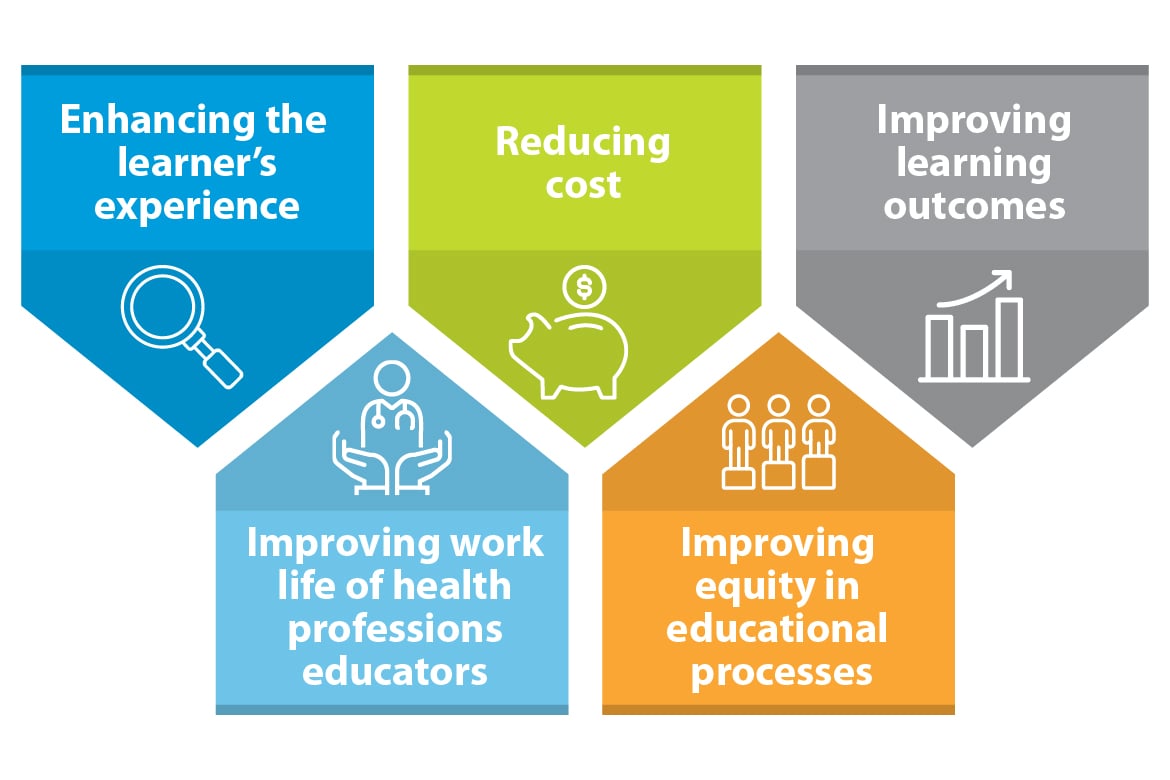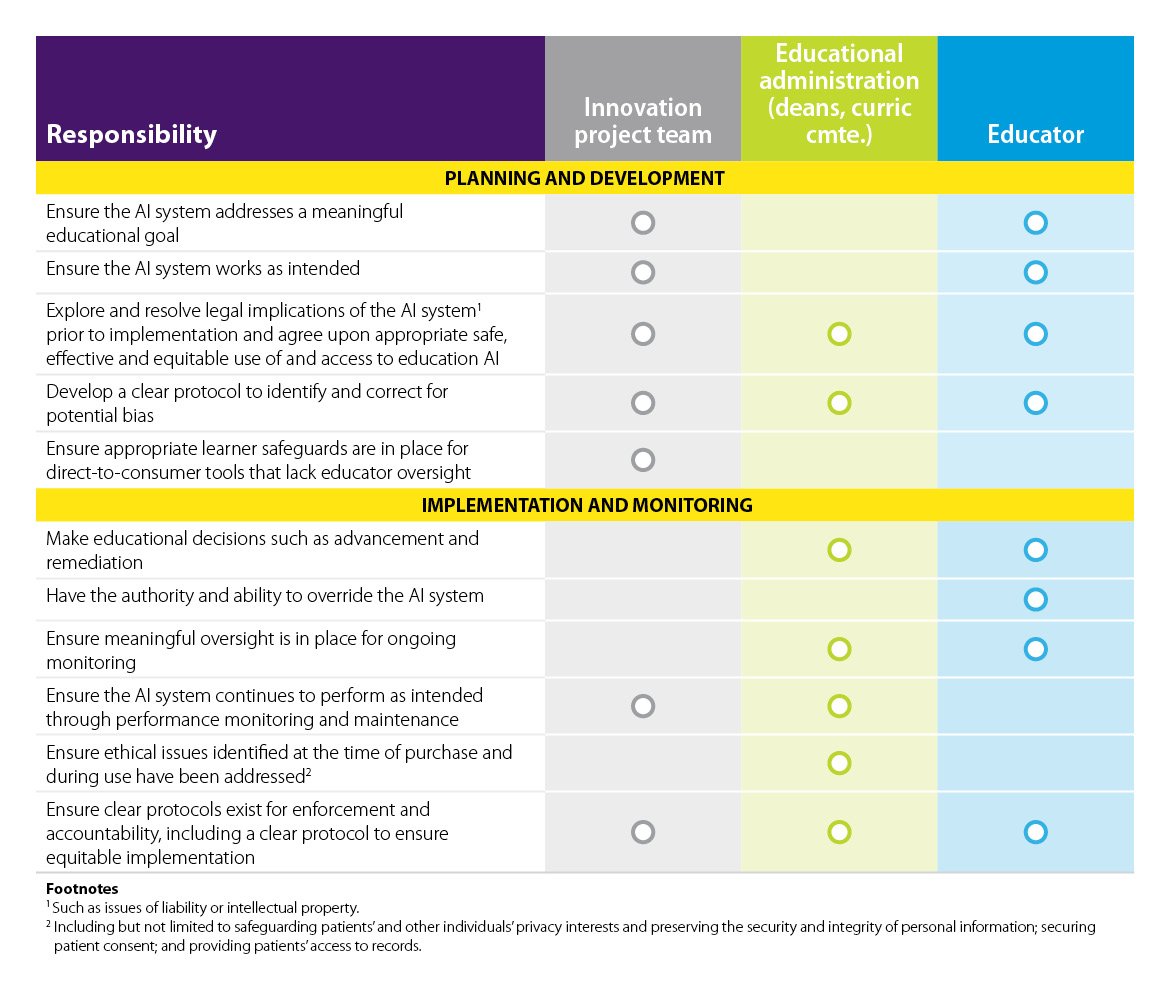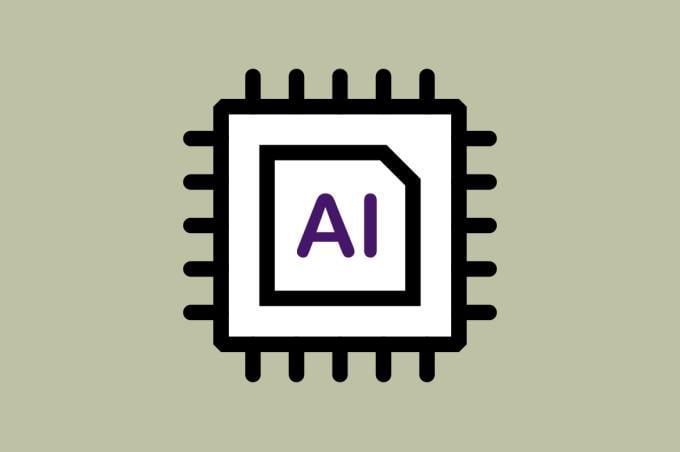- Developing a framework for educational AI
- Our vision: Applying AI to support the educational equivalent of the quintuple aim
- Clearly defined roles and responsibilities
- Guidance for developers and educational innovators
- Guidance for deployers of AI: Educational administrators
- Guidance for front-line educators
- AI stakeholder insights
- Need for transparency
- Establishing guardrails and education
- Translating principles into practice
- AMA Code of Medical Ethics guidance
- Additional AMA health care AI resources
Developing a framework for educational AI
The AMA has created a framework for the development and use of AI in health care, building on AMA policy for augmented intelligence (PDF) and the latest research. Viewed through the lenses of ethics, evidence and equity, the AMA promotes Trustworthy Augmented Intelligence in Health Care.
This companion document leverages the same framework in considering educational applications of AI and addresses the use of AI to facilitate the process of training health professionals. This document does not address the important goal of providing training in AI for health care professionals to facilitate their duties in providing care; that is addressed elsewhere.
Our vision: Applying AI to support the educational equivalent of the quintuple aim
Fundamentally, health professions education serves to create a health care workforce capable of meeting the needs of patients and populations. Advances in medical education seek to support the Quintuple Aim of health care: enhancing the patient experience, improving health outcomes, reducing costs, bettering the experience of health care professionals, and advancing health equity.
This same model can be applied to consider the ideal process of education itself and the experience of learners and educators.
AI enhances the learner’s experience
In our vision, AI drives education that is more personalized to each learner’s needs. Learners’ rights are respected, and they are empowered to understand and contribute to the use of AI in their education. Research demonstrates that AI use improves learning outcomes, quality of life and satisfaction.
AI improves learning outcomes
AI will facilitate an educational program’s ability to respond to individual learner needs at scale. By enabling contextualized processing of complex assessment data across settings and connecting with potential educational opportunities, AI drives learning experiences that meet each learner in their zone of proximal development.
AI improves the work-life of educators
Educators are engaged in developing and implementing AI tools that augment their ability to provide high-quality feedback to learners. Administrative burdens are reduced, allowing educators to focus on interactions with learners, thereby improving their well-being. Barriers to adoption, such as lack of education about AI, are overcome and liability and privacy issues are addressed.
AI reduces cost
Targeted, personalized education improves efficiency in the use of resources to support the competency development of learners. Administrative costs are offset by AI tools designed for education, thus advancing affordability and access to medical education. Oversight of educational programs ensures compliance with applicable laws and regulations, based on appropriate levels of educational validation and high-quality evidence.
AI improves educational equity
Educational AI addresses high priority needs and improves outcomes for all learners. Existing bias in the educational system is combatted by integrating data across sources to improve equity in assessment and in experience. Attention to the risk of bias and co-production with learners leads to AI tools that mitigate rather than amplify bias.
Clearly defined roles and responsibilities
Clear definition of roles and responsibilities for the following participants is central to putting the ethics-evidence-equity framework into practice:
 Developers of educational AI systems
Developers of educational AI systems
 Administrators who deploy AI systems in formal educational programs
Administrators who deploy AI systems in formal educational programs- Educators who integrate AI into the process of training individual learners and cohorts
Guidance for developers and educational innovators
The rapid advance of AI may place innovative educators into a new role, co-designing tools with AI developers. Educators should be mindful of the responsibilities associated with development:
- Does the tool address a meaningful educational need?
- Ensure that the AI system is designed for a specific need and is not a tool looking for a use.
- Does the system work as intended?
- Impact may diverge from intent. Learners and front-line educators are important sources of information regarding the actual impact of a tool.
- Have the appropriate legal and ethical considerations been addressed?
- Solicit learner insights during the development process to understand potential ethical concerns.
- Consider the appropriate handling of learner academic/performance data, as well as learner personal data.
- Consider the appropriate role of evolving data sources. For example, some educational innovations are applying wearable technology. Consider whether such interventions lead to the collection of personal health information or border on rendering clinical care to the learner.
- How is the system monitored for bias and for ongoing performance?
- The developer must acknowledge the need for, and plan a process for, quality assurance.
- Is the system implemented in an equitable manner?
- The process of development should consider a variety of use cases, envisioning differing learner needs.
- How will the educational value be studied?
- Educational innovators must study the positive and potential negative impacts on learning or on the experience of learners and front-line educators.
Guidance for deployers of AI: Educational administrators
AI offers wide-ranging potential enhancements to medical education programs. Deans of curriculum, assessment, and student affairs; program directors and designated institutional officials; directors of continuing professional development; and other educational leaders will be approached to consider deployment of specific AI applications. Such institutional officials bear responsibility to protect learners.
- Have the appropriate legal and ethical considerations been addressed?
- What is the protocol to identify and address bias?
- What is the process for ongoing maintenance and monitoring of the AI tool’s performance?
- Is the AI system being implemented consistently across the organization?
Educational administrators must retain authority over high stakes decisions such as advancement or remediation.
Guidance for front-line educators
Front-line educators can use this AI framework to evaluate whether an educational AI innovation meets these conditions:
- Does it work?
Determine that the AI system meets expectations for ethics, evidence, and equity. It can be trusted as safe and effective. - Does it work for my learners or educators like me?
The AI system has been shown to improve learning outcomes for a learner population like mine, or for educators in similar roles, and I have the resources and infrastructure to implement it in an ethical and equitable manner. - How will I contribute to research about the efficacy of the AI system?
To foster collective understanding about the impact of AI in education, each instance of use should contribute to studying efficacy.
The front-line educator must have a mechanism to express any concerns about results from the AI system and potentially override it if indicated.
AI stakeholder insights
Prior to developing this framework, the AMA consulted with key stakeholder groups to elicit their perspectives on the intersection of AI and education. It is the AMA’s aim that individuals and organizations interested in trustworthy development and implementation of AI in medical education will benefit from knowing and considering the insights shared.
Need for transparency
Several stakeholder groups spoke to the need for transparency and clarity in the development and use of educational AI, specifically with respect to:

 The intent behind the development of an AI system. How educators, learners and AI systems will work together to promote trustworthy systems.
The intent behind the development of an AI system. How educators, learners and AI systems will work together to promote trustworthy systems. How protections such as data privacy and security will be handled.
How protections such as data privacy and security will be handled.- The program of research to validate educational benefit.
 How ongoing monitoring of the performance of AI systems to mitigate potential negative impacts will be conducted.
How ongoing monitoring of the performance of AI systems to mitigate potential negative impacts will be conducted.
Establishing guardrails and education
Stakeholders emphasized the importance of establishing guardrails for validating AI systems and ensuring educational inequities are not exacerbated in development and implementation. Education and training efforts are needed to increase the number and diversity of educators with AI knowledge and expertise.
Translating principles into practice
Together these various considerations suggest responsible use of AI in medical education entails commitment to designing and deploying AI systems that:
 Address educationally meaningful goals.
Address educationally meaningful goals.
 Uphold the profession-defining values of medicine and of medical education.
Uphold the profession-defining values of medicine and of medical education.- Promote educational equity.
 Support meaningful oversight and monitoring of system performance.
Support meaningful oversight and monitoring of system performance. Recognize clear expectations for accountability and establish mechanisms for holding stakeholders accountable.
Recognize clear expectations for accountability and establish mechanisms for holding stakeholders accountable.- Contribute to ongoing study of the impact of AI in medical education.
AMA Code of Medical Ethics guidance
The Code of Medical Ethics provides relevant perspectives from health care for which readers can consider the educational corollary.
 Code of Medical Ethics Opinion 1.1.6: Quality
Code of Medical Ethics Opinion 1.1.6: Quality
 Code of Medical Ethics Opinion 1.2.11: Ethically Sound Innovation in Medical Practice Code of Medical Ethics Opinion 11.2.1: Professionalism in Health Care Systems
Code of Medical Ethics Opinion 1.2.11: Ethically Sound Innovation in Medical Practice Code of Medical Ethics Opinion 11.2.1: Professionalism in Health Care Systems

 Developers of educational AI systems
Developers of educational AI systems


 Address educationally meaningful goals.
Address educationally meaningful goals.


